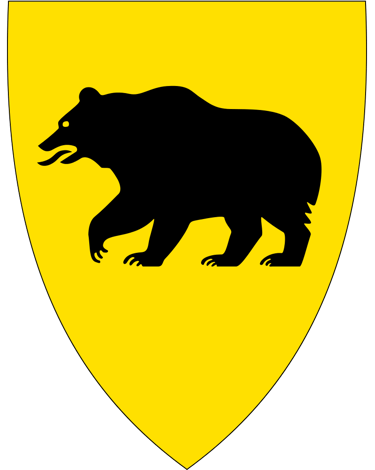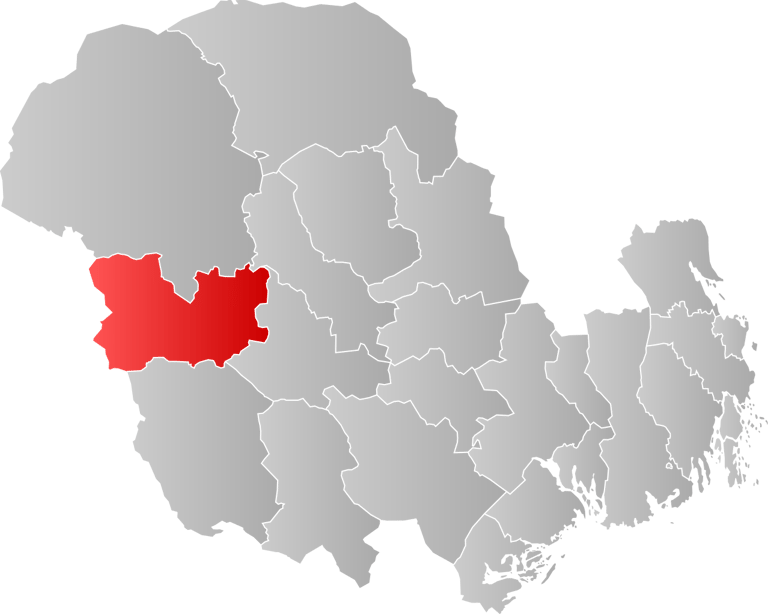Coming Soon


Tokke Kommune
Pop. 2,363; Area 907 sq. km. (350 sq. mi.)
The kommune of Tokke was formed by combining the historical districts of Mo, Lårdal, and Dalen. It also includes Høydalsmo, Eidsborg, Skafså, Åmdals Verk, Bandakslid, and Byrte. It is one of the most exciting in Telemark when it comes to natural beauty and local culture. Nature along Highway 45 is as dramatic as anything found on Norway's West Coast with forested hills and majestic mountains, such as Øyfjell. Some of the finest collections of folk art in the country are here.
Dalen is the largest town in Tokke and is the administrative center for the township. In addition to business and service institutions, there are excellent facilities for tourists. Dalen is the last stop for boat traffic on the Telemark Canals.
Høydalsmo, formerly known as Ofte, lies at the crossroads of Highway 45 and E 76. The world's first ski jumping competition took place at the Ofte ski-jump. A small monument to this event has been raised on a low mound on the north side of the eastern approach to the village.
Lårdal, from the Old Norse "logr" meaning lake, is on the shore of Lake Bandak. It is famous for its warm climate which permits growing grapes outdoors and an annual harvest of walnuts and other exotic fruits.
Sights to See
Anne Grimdalen Memorial Museum is a district museum. Grimdalstunet, the farm where the sculptress grew up lies at Skafså on Highway 45 just where the road begins its climb up to the mountain pass to Setesdal. The farmyard has storehouses dating back to medieval times. Nearby a modern museum building housing many of Anne Grimdalen's works has been built by the townspeople. The exhibits range from plaster casts to original animal sculptures and portrait busts. Exhibitions of the works of contemporary Norwegian artists are held every summer.
The Dalen Hotel, or the "Establishment," as it once was known, is one of the few hotels in "Swiss style" still standing in its original form. It was finished in 1894. The public rooms include a magnificent lobby and dining salon. This monument to the golden age of passenger traffic on the Telemark Canals is undergoing an extensive program of restoration.
Eidsborg Stave Church lies on Highway 45 between Dalen between Dalen and Høydalsmo. It was built sometime during the 1200s. Until 1850 a figure representing St. Nicolas of Bari, patron saint of travelers, hung in the church. It was reputed to work wonders and pilgrimages were made to the church from miles around. The church was enlarged both in 1826 and 1845. The wall paintings and borders date from 1604 and 1649.
"The Church Cottage", next to Eidsborg church, was built in the 1800s and formerly used as a schoolhouse and a meeting place.
The Lårdal Bygdetun (District Museum) was created by silversmith Eivind Tveiten and his wife, Hæge. The museum is built around the two Vindlaus farms, both of which stand on their original sites. These have been supplemented with buildings usually found on a farm. There are 22 different buildings on the museum grounds. The oldest building has a runic inscription which has been dated to 1300. In addition, a modern museum building has been built to house the unique collections. The contrast formed by the Stave Church, the Church Cottage, and the District Museum is remarkable not only to Telemark but to the country as a whole.
Eidsborg Whetstone Quarry is the oldest industrial establishment in Norway. The quarry was started in the Viking Age and continued to be worked until after World War II. In addition to normal use for sharpening knives, the stones were also used as throwing weapons. Whetstone was the first product to be shipped down the Telemark waterway for export. The quarry has always meant an extra income for its owners. All were local people who met once a year at a "stone parliament" to decide just how much stone was to be taken out that year.
Mo Church was built on the site of a former stave church. It was consecrated in 1839 and restored in 1960. The altarpiece from the stave church, restored by artists Henrik Sørensen, Harald Kihle, and Finn Krafft, was placed in the newer church. A 15th-century crucifix and a chandelier from 1766, also from the stave church, were also installed in the new church. It is the burial place of the folksinger Torbjørg Ripilen, who preserved medieval ballads and related them to other folklorists.
The Ravne Gorge (Ravnejuvet) is at the end of a hiking path leading from the District Museum. This is an impressive lookout point at the edge of a 200-meter cliff. If you throw a light object such as paper or a handkerchief over the cliff, the rising air currents will bring it right back to you again. The gorge can be reached by car, taking the side road from Liosvingen to Gøytil.
The Tokke Hydroelectric Plant is one of northern Europe's largest power plants with a production of some 440,000 kilowatts. It utilizes the fall from Lake Vinje to Lake Bandak Lake Bandak (394 meters). The plant is built into the mountain about 800 meters south of the boat wharf. It is open for group tours by appointment.
Høydalsmo Church dates back to about 1750.
Aamdals Verk Mining Museum offers exhibits and guided mine shaft tours. Mining activities were carried on in Telemark from 1540 to 1945.


Bygdebok for Tokke
Tokke historielag. Årsskrift, 1979- Dalen, Tokke historielag.
Bakken, Olav T. Lårdalsoga; Kultdursoge med skulesoge, gardsoge, Lårdal herred med Øyfjell. Ættesoge, register og oversyn. Skien: O. Rasmussen, 1978.
Marvik, Steinar.Mo bygdebøk. Hamar, 1988.
